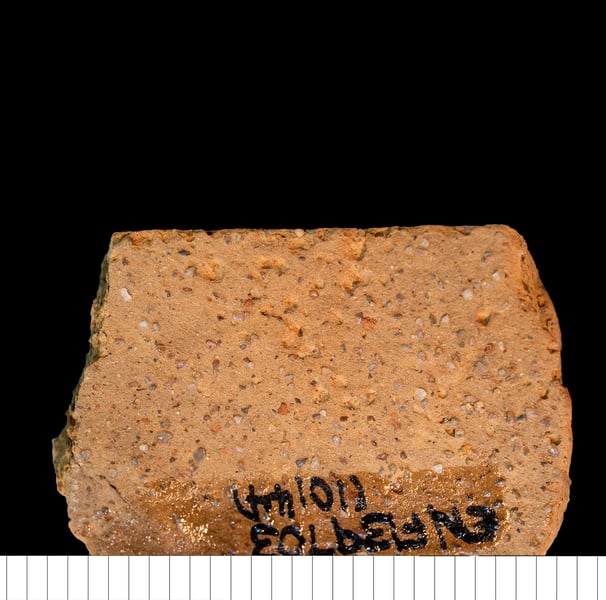NNFSW - North Norfolk fine sandy ware
Buff to light grey, abundant fine-medium sandy with grains clearly visible in the surface. Rare flint, chalk and mica.
Bacton–King's Lynn fabric MCW1, TS description (H. Page): Well sorted, few rounded to sub-rounded, very coarse to coarse quartz inclusions. Predominant, fine and very fine elongate biotite mica inclusions, very rare chert. Heterogeneous, silty, oxidised, optically active, non-calcareous grey matrix with some dark brown streaking and few concordant merging textual features with low optical density. Rare mega-vughs. Coarse grained quartz set within a silty heterogenous clay matrix could suggest the presence of sand tempering. No calcareous inclusions were noted in thin-section, unlike the macroscopic fabric description.
Sample from Itteringham.




NNFSW - North Norfolk fine sandy ware
Buff/pale orange to light grey, abundant fine-medium sandy with grains clearly visible in the surface. Rare flint, chalk and mica. Some soft red clay pellets.
TS description (P. Quinn): Bimodal grain size composed of sub-rounded to sub-angular medium-coarse sand-sized inclusions of quartz and occasionally foliated polycrystalline quartz, plus an abundant silt-sized fine fraction dominated by quartz and white mica (Figure 3C, D). The sample contains significant opaques including ironstone nodules with silt sized grains inside them. The clay matrix is noncalcareous and porosity is low and formed mainly of meso-elongate voids. A couple of silt argillaceous inclusions occur in the sample and may be remnants of base clay. This and the bimodal grain size distribution seem to suggest that the sample was tempered. Firing took place in an oxidising atmosphere and the presence of optical activity in the clay matrix suggests that the temperature was not above 850°C.
Sample from Rackheath.
Copyright
This website, and the type series, was created by Dr Sue Anderson, Spoilheap Archaeology: www.spoilheap.co.uk
I am available for contract work on pottery from East Anglia and beyond. Email sue@spoilheap.co.uk
© 2024. All rights reserved.
To visit the type series at Suffolk County Council Archaeological Service, Bury St Edmunds, contact Faye Minter: Faye.Minter@suffolk.gov.uk
Tel: 01284 741 228 to make an appointment.